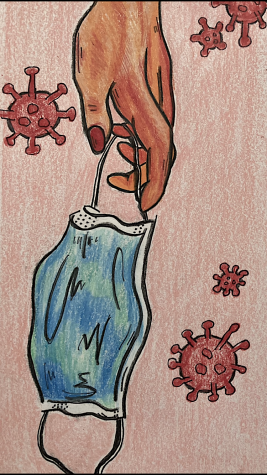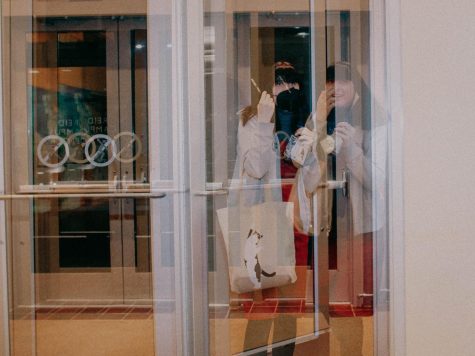The consequences of panic buying
April 4, 2020
Lately, it’s not been uncommon to see pictures of empty store shelves and people with cartloads of toilet paper and essentials on social media. These pictures reflect back the anxiety, despair and pandemonium of the new decade’s zeitgeist back at us. In addition, they serve as a catalyst for another pandemic: panic buying.
A few days ago, I was driving through West Seattle when I passed the local Trader Joe’s. There was a giant line outside the store, extending past the parking lot and onto the sidewalk. I have never seen anything like it. This is a reflection of what we see on social media; this is the reality that we are living in. However, we don’t associate one as a reaction to the other. Social media, the empty shelves and the long lines reinforce a misconception that everyone is stockpiling and panic buying, which causes more people to go out and buy more, thus increasing the incredibly high demand for them.
The majority of us shoppers are not stockpilers, nor are we hoarding essentials. Regardless, we are contributing to the increased demand for essentials. When we see pictures of empty shelves, people buying enough toilet paper to last a lifetime, headlines about people hoarding hand sanitizer and long lines outside of stores, we understandably assume a shortage of essentials is nigh. So, we take more trips to the grocery store and add a few more items to our basket or cart. It’s not so bad when a few people do this, but when millions upon millions do this, it leads to empty shelves, long lines and increased demand.
The present demand for toilet paper, for example, is not a stable one; it will last for as long as the panic does. How long will that be? It could last for five weeks, or maybe a couple of months. It’s difficult to predict, and that is the issue companies and manufacturers are facing. They meet demand with something called just-in-time ordering, which means that they manufacture and ship out supplies in accordance with the demand. This helps them save money and prevent goods from piling up in inventory. Right now, the demand is astronomically high and out of sync with the supply. In order to meet demand, a toilet paper manufacturer would need to cut down more trees and spend money on more equipment. They are hesitant to do so because, as previously mentioned, this is not a stable demand. If the panic is over in five weeks, they would lose a vast sum of money. They aren’t going to take any risks, so the demand will continue to be higher than the supply.
Panic buying not only gives scarcity to essentials, it endangers grocery store employees who are needed now more than ever. Because of their close proximity to people, cashiers are very susceptible to COVID-19, and many of them are testing positive for it. People are taking more trips to the grocery store to get more supplies and any of them could be carrying COVID-19. The virus can survive on cardboard and plastic packaging which could infect an employee who has to handle these things daily. Even during a pandemic, people still need to eat and get supplies when they run out. If too many employees are quarantined as a result of contracting COVID-19, stores will be severely understaffed and won’t be able to meet with the present demand.
Panic buying is a beast that sustains itself. It begins with a minority of anxious shoppers until everyone is aware of its presence. Don’t take more trips to the grocery store than you need and wash your hands after handling packaging. Panic buying is an unstable and dangerous symptom of COVID-19 and its current grip on the economy and the world is merciless.






